



If you ever find yourself craving a slower pace with a touch of old-world charm,Taiping in Malaysia is the kind of place that wraps you in a gentle,welcoming hug. The moment you step into its streets,there’s this unmistakable calmness—like the city breathes at a rhythm that invites you to pause and soak it all in. The air carries a mix of earthy freshness from the lush greenery and the faint,sweet aroma of local street food sizzling nearby. It’s a place where colonial-era buildings stand proudly alongside vibrant markets,telling stories of a rich past without ever feeling stuffy. Wandering through Taiping’s famous Lake Gardens,you’ll hear the soft rustle of leaves and the cheerful chatter of birds,while the cool shade offers a perfect escape from the tropical sun. The town’s character shines brightest in its people—warm,easygoing,and genuinely proud of their heritage. Stop by a kopitiam (coffee shop) and sip on a cup of thick,aromatic white coffee while nibbling on freshly made kaya toast; it’s a simple pleasure that somehow feels like a secret handshake among locals. What really makes Taiping stand out is its blend of nature and history,from the serene waterfalls just a short drive away to the quirky museums tucked into quiet corners. It’s not about flashy attractions but about savoring moments—whether it’s the laughter echoing from a bustling night market or the peaceful reflection by a tranquil pond. Taiping invites you to slow down,listen closely,and discover a Malaysia that feels both timeless and warmly alive.
The information on this page is currently being reviewed by Tripkliq and should be used as a guide only
Eng word: Hello
Eng pronunciation: Ha-lo
Local language: Halo
Eng word: Goodbye
Eng pronunciation: Se-la-mat ting-gal
Local language: Selamat tinggal
Eng word: Thank you
Eng pronunciation: Te-ri-ma ka-sih
Local language: Terima kasih
Eng word: How much
Eng pronunciation: Be-ra-pa
Local language: Berapa
Eng word: Toilet
Eng pronunciation: Tan-das
Local language: Tandas
Eng word: Help me
Eng pronunciation: To-long sa-ya
Local language: Tolong saya
Eng word: Yes
Eng pronunciation: Ya
Local language: Ya
Eng word: No
Eng pronunciation: Ti-dak
Local language: Tidak
Eng word: Excuse me
Eng pronunciation: Ma-af
Local language: Maaf
Taiping was the first capital of the state of Perak before it was moved to Ipoh in 1937. The city played a significant role in the early development of the state due to its booming tin mining industry.
Taiping became a major hub for tin mining in the 19th century, attracting workers from around the world. The Larut Wars, fought between Chinese clans over control of tin mines, were pivotal in shaping the city's history.
Taiping is home to Malaysia's first railway line, which was built in 1885. The railway connected Taiping to Port Weld (now known as Kuala Sepetang) to transport tin efficiently to the port.
The Taiping Lake Gardens, established in 1880, is Malaysia's first public garden. It was created from a former tin mining site and is now a serene and picturesque attraction for visitors.
The Perak Museum, located in Taiping, is the oldest museum in Malaysia. Established in 1883, it houses a rich collection of artifacts, natural history exhibits, and cultural heritage displays.
Taiping Prison, built in 1879, is the oldest prison in Malaysia. It is still operational today and stands as a testament to the city's historical significance during the British colonial era.
Taiping is known as the wettest town in Peninsular Malaysia, receiving the highest annual rainfall. This abundant rainfall contributes to the lush greenery and scenic beauty of the area.
The Taiping Clock Tower, built in 1881, is a historical landmark that symbolizes the city's rich heritage. It is a popular spot for tourists to take photos and learn about the city's colonial past.
Maxwell Hill, now known as Bukit Larut, is Malaysia's oldest hill station. Established in 1884, it offers breathtaking views, cool weather, and a peaceful retreat for visitors.
In Taiping, the most common Power Adaptor is Type G.

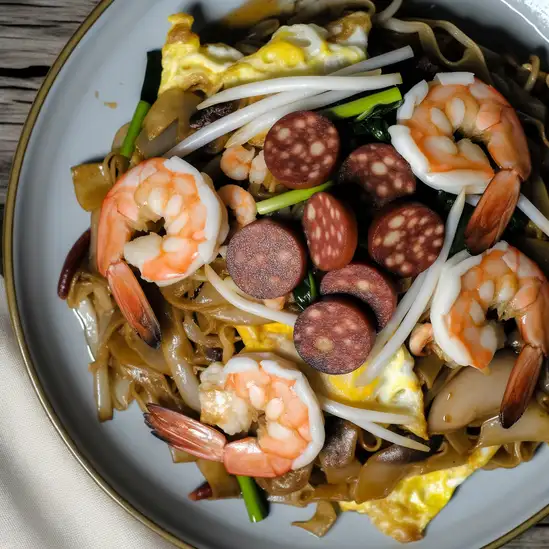
A stir-fried flat rice noodle dish with shrimp, bloody cockles, Chinese lap Cheong (sausage), eggs, and bean sprouts, often cooked in a wok over high heat.

A flaky, buttery flatbread served with dhal (lentil curry) or other curries, commonly enjoyed for breakfast or as a snack.
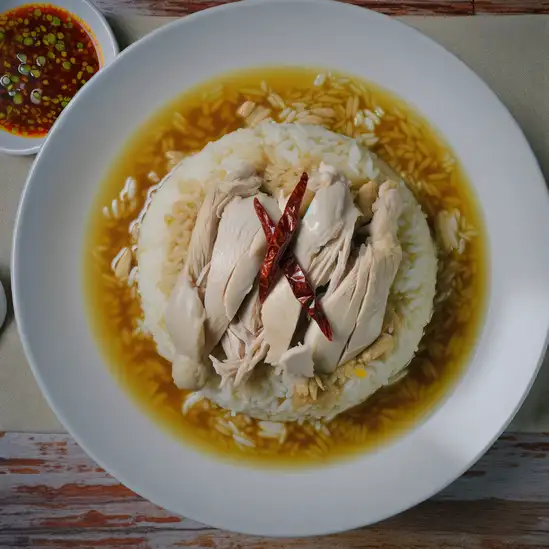
Poached chicken served with fragrant rice cooked in chicken broth, accompanied by chili sauce and ginger paste.

A spicy noodle soup with a coconut milk base, often featuring prawns, fish, or chicken, and garnished with fresh herbs.
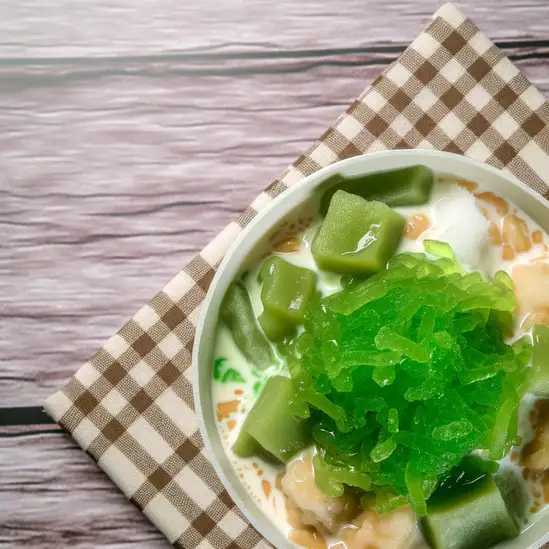
A traditional dessert made with shaved ice, coconut milk, green rice flour jelly, and palm sugar syrup, perfect for cooling down in the tropical heat.
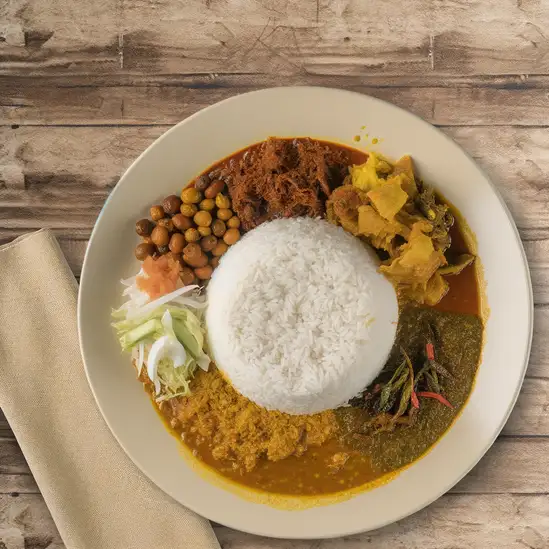
A popular Malaysian dish consisting of steamed rice served with a variety of curries and side dishes, often enjoyed with fried chicken or fish.
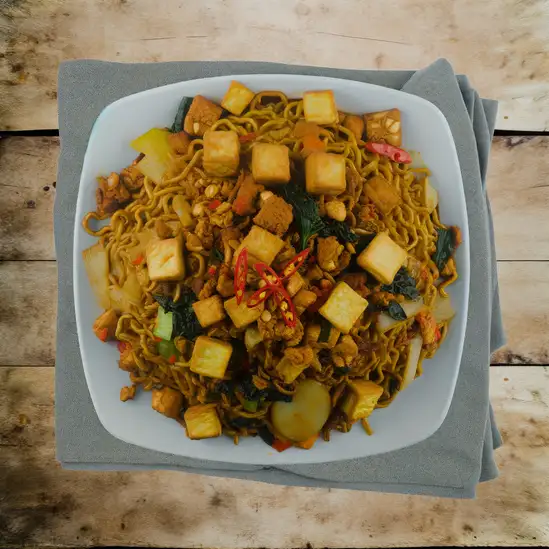
A spicy fried noodle dish with a mix of vegetables, tofu, and sometimes chicken or seafood, seasoned with soy sauce and chili.
If you wander into George Town,Malaysia,you’ll immediately feel like you’ve stepped into a living canvas where history and modern life dance together effortlessly. The streets hum with a gentle buzz—motorbikes weaving past colorful shophouses,the chatter of locals blending with the clatter of street vendors setting up their stalls. There’s a warmth in the air,not just from the tropical sun but from the genuine smiles of people who clearly love their city.
As you stroll through the narrow lanes,your senses come alive. The scent of freshly fried char kway teow mingles with the earthy aroma of kopi brewing in tiny coffee shops. Walls burst with vibrant street art that tells stories of the city’s rich multicultural heritage—Chinese,Malay,Indian,and more—all coexisting in a beautiful patchwork. You can almost taste the history in the air,from the colonial architecture to the centuries-old temples tucked between modern cafes.
What makes George Town truly special is its soul. It’s a place where tradition isn’t stuck in the past but woven into everyday life. Whether you’re savoring a bowl of laksa at a hawker stall or chatting with an artist in a cozy gallery,you feel connected to something authentic and alive. It’s a city that invites you to slow down,explore with curiosity,and fall in love with its stories,one flavorful bite and colorful corner at a time.
If you’re dreaming of a place where nature’s beauty feels like it’s wrapped around you like a warm hug,Langkawi is that kind of magic. The moment you step off the ferry or plane,there’s this gentle tropical breeze carrying the scent of salt and frangipani,instantly calming your mind. The island hums with a laid-back energy—no rush,just the soft rustle of palm leaves and the distant call of exotic birds. It’s the kind of place where time slows down,inviting you to soak in every vibrant detail.
Langkawi’s charm lies in its wild,lush landscapes meeting the turquoise sea. Imagine hiking through dense rainforests where sunlight filters through the canopy,dappling the forest floor,or standing on the Sky Bridge,suspended high above the treetops,with panoramic views that steal your breath away. The beaches aren’t just pretty—they’re alive with the sound of gentle waves lapping against powdery white sand,and the taste of fresh seafood grilled right on the beach,bursting with smoky,spicy flavors.
What really makes Langkawi special is its blend of cultures and stories. You’ll find local markets buzzing with friendly vendors offering tropical fruits and handmade crafts,while the island’s legends and history whisper through ancient temples and mangrove forests. It’s a place where you can lose yourself in nature,savor authentic Malay flavors,and feel the genuine warmth of the people. Trust me,Langkawi isn’t just a destination—it’s a feeling you’ll want to carry with you long after you leave.
If you ever find yourself craving a place where history hums softly beneath the buzz of everyday life,Ipoh is where you should go. The city has this laid-back charm that wraps around you like a warm,familiar blanket. Walking through its streets,you’ll catch the scent of freshly brewed white coffee mingling with the earthy aroma of limestone hills that cradle the town. It’s a sensory invitation to slow down and savor the moment.
Ipoh’s character is a beautiful blend of old and new. Colonial-era buildings stand proudly alongside vibrant street art,telling stories of a rich past and a creative present. The locals are incredibly friendly,often ready with a smile or a recommendation for the best spot to try their famous chicken rice or kaya toast. Speaking of food,the city’s culinary scene is a delicious adventure—imagine biting into crispy,golden curry puffs or sipping on a bowl of silky,fragrant Ipoh hor fun while the sounds of sizzling woks and lively chatter fill the air.
What really makes Ipoh special is its pace and personality. It’s not rushed or flashy,but it’s alive with culture,nature,and warmth. Whether you’re exploring the cool caves dotted with ancient temples or wandering through bustling markets,there’s a genuine,heartfelt vibe that stays with you long after you leave. Trust me,Ipoh isn’t just a stop on the map—it’s a place that invites you to feel at home.
Kuala Lumpur feels like a vibrant heartbeat pulsing through the heart of Malaysia—where tradition and modernity dance effortlessly together. The moment you step into the city,you’re greeted by the towering silhouettes of the Petronas Twin Towers piercing the sky,their glass facades shimmering against the tropical sun. But it’s not just the skyline that captivates you; it’s the lively street scenes below. The air buzzes with the chatter of street vendors,the sizzle of satay grilling over open flames,and the sweet aroma of pandan and lemongrass wafting from bustling food stalls.
Walking through neighborhoods like Bukit Bintang or Chinatown,you’ll find a kaleidoscope of colors and sounds—vibrant markets brimming with spices,textiles,and handcrafted trinkets,while the calls to prayer from nearby mosques blend harmoniously with the hum of city life. The city’s rich cultural tapestry is woven from Malay,Chinese,and Indian influences,creating a unique blend you can taste in every bite of nasi lemak or teh tarik.
What I love most is how Kuala Lumpur never feels rushed. Whether you’re sipping kopi at a roadside stall or wandering through the lush greenery of the KL Forest Eco Park,there’s a warm,welcoming energy that invites you to slow down and soak it all in. It’s a city that surprises you at every turn—full of contrasts,flavors,and stories waiting to be discovered.
If you ever find yourself wandering through Malacca,you’ll immediately notice how the past and present seem to dance together in the warm,humid air. The city hums with a laid-back charm,where colonial buildings painted in soft pastels line the streets,and the scent of spices and grilled satay drifts from bustling night markets. Walking along the river,you hear the gentle splash of boats and the chatter of locals sharing stories over cups of strong,sweet teh tarik. It’s a place where history isn’t just in museums—it’s alive in the colorful street art,the old Dutch forts,and the mix of Malay,Chinese,and Portuguese influences that flavor everything from the architecture to the food.
Speaking of food,Malacca is a feast for the senses. Imagine biting into a crispy,golden chicken rice ball or savoring the rich,tangy kick of a bowl of Asam Pedas,all while the aroma of freshly fried coconut pancakes (apam balik) teases your nose. The city’s vibrant night market is a sensory overload—in the best way—with vendors calling out,lanterns glowing,and the air thick with the smell of sweet palm sugar and smoky barbecues.
What really stays with you,though,is the city’s soul. Malacca feels like a warm embrace from a friend who’s eager to share stories of centuries past,while inviting you to create your own memories. It’s a place where every corner holds a surprise,and every moment feels like a gentle invitation to slow down and savor life’s simple pleasures.
Imagine stepping into a place where the ocean breeze carries the scent of salty waves mingled with sizzling street food,and the sky melts into hues of pink and orange as the sun dips behind lush mountains. That’s Kota Kinabalu for you—a vibrant city that feels alive yet effortlessly laid-back. It’s the kind of place where you can wander through bustling markets filled with the chatter of locals,the clinking of fresh seafood on ice,and the rich aroma of spices from nearby stalls. The city pulses with a warm,welcoming energy that instantly makes you feel at home.
What really sets Kota Kinabalu apart is its seamless blend of nature and culture. You’re never far from the stunning backdrop of Mount Kinabalu,whose towering presence invites adventure and awe. At the same time,the city’s streets are a colorful tapestry of indigenous traditions,Malay influences,and Chinese heritage,all coming together in lively festivals,art,and food. Don’t miss trying the fresh seafood—imagine biting into a juicy,chili-laced grilled fish while the ocean breeze cools your skin.
Evenings here are magical. The waterfront comes alive with twinkling lights,the hum of live music,and the laughter of friends sharing meals under the stars. Whether you’re sipping a tropical drink or exploring night markets,Kota Kinabalu wraps you in a cozy,spirited embrace that stays with you long after you leave.
Scammers install skimming devices on ATMs to steal card information from unsuspecting tourists withdrawing cash.
Street vendors sell fake branded items or low-quality souvenirs at inflated prices, claiming they are authentic or handmade.
Scammers approach tourists asking for donations to fake charities or causes, often using emotional stories to manipulate them.
Scammers pose as tour guides and offer overpriced or fake tours, providing little to no value to tourists.
Fraudulent travel agents sell fake or non-existent travel packages, leaving tourists stranded or without accommodations.
Some eateries may inflate prices or add hidden charges to bills when they realize the customer is a tourist.
Unlicensed taxi drivers or ride-hailing services charge exorbitant fares, especially to tourists unfamiliar with local rates.
Thieves target tourists in crowded areas, such as markets or attractions, to steal wallets, phones, or other valuables.
Malaysia has extremely strict drug laws, including severe penalties for possession, use, and trafficking. Even small amounts of illegal drugs can result in heavy fines, imprisonment, or the death penalty. Tourists should avoid any involvement with drugs and be cautious about carrying prescription medications, ensuring they have proper documentation.
Smoking is prohibited in most public places in Taiping, Malaysia, including restaurants, parks, and government buildings. Malaysia has strict anti-smoking laws, and designated smoking areas are limited. Violators may face fines. Tourists should look for 'No Smoking' signs and adhere to local regulations.
Vaping is subject to similar restrictions as smoking in Malaysia. It is banned in public places and areas where smoking is prohibited. Additionally, the sale of vape products containing nicotine requires proper licensing, and unlicensed sales are illegal. Tourists should avoid vaping in restricted areas and ensure compliance with local laws.
What are other people saying about Taiping?
Recent Social posts about Taiping
There is nothing to show you for now.